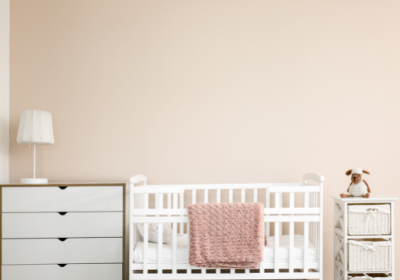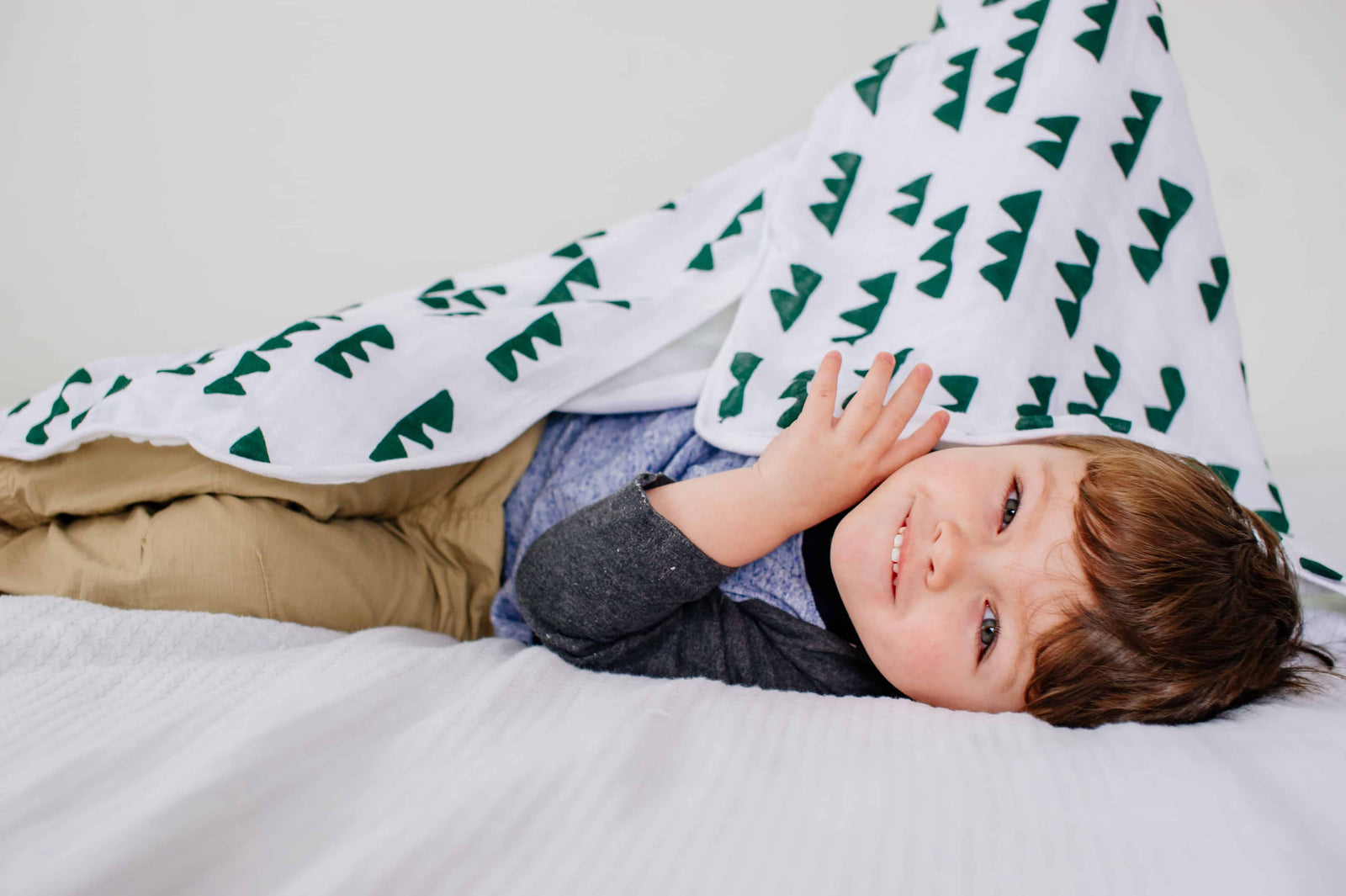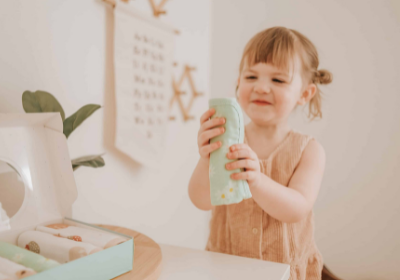If you're here, you’ve likely already decided that co-sleeping feels right for your family and are tired of the judgment of family or doctors. We’ve been there. It’s exhausting answering probing questions and feeling like you need to justify your decision. After trying (and hating!) different sleep training methods, we knew that co-sleeping was the absolute best decision for our family and most importantly, our son. Between easier nighttime feedings, extra bonding time, and a better night’s sleep for us all, we never looked back.
Sadly, many parents today feel that they have to lie to their child’s pediatrician about sleeping arrangements, and therefore miss out on important safety information. We’re here to provide you with practical tips for how to make sharing a bed as safe as possible.

Some families prefer co-sleeping for more bonding time and easier nighttime feedings
What is co-sleeping?
It’s the practice of sleeping close by your child, whether it’s in the same bed or the same room. There are a few different ways that families around the world co-sleep.
Bed Sharing
Bed sharing is what most people think of as co-sleeping: the practice of the baby sharing their parent(s) bed. You can also use a sidecar crib, which is essentially a bassinet with one open side that can be fastened to your bed.
Room Sharing
Recommended by theAmerican Academy of Pediatrics (AAP), room sharing means that your baby sleeps in a crib or bassinet in the same room as you. The AAP finds room sharing for the first six months to be the safest option because it can decrease the risk of Sudden Infant Death Syndrome (SIDS) and SUIDS by as much as 50%.
As-needed Basis
Even the strictest of rule-followers has brought their fussy baby into bed a few times. Co-sleeping on an as-needed basis varies from family to family, but it’s the practice of allowing your child to sleep in your bed whenever they need/want to.
Benefits of Co-sleeping
While sharing a bed or room is not the best fit for every family, it has many advantages. Although increased SIDS awareness in recent years has made many parents in the U.S. scared to co-sleep, it’s popular around the world. It’s also something that often happens naturally, even if you don’t intend to. Many families in Asia and Latin America co-sleep, and, in fact, the lowest SIDS rates in the world are in Hong Kong, where it is very common.
Some benefits include:
-
Many parents find that they get more sleep when their baby is within arm’s reach. It’s easier to settle and feed them when they’re nearby, as opposed to down the hallway or across the room. When your breastfeeding infant is waking up 6-8 times a night, sharing a bed often feels like the obvious or natural choice.
-
Babies get more sleep. We all know that many infants wake the instant you try to put them in a crib or bassinet. After being in the womb for 9 months, they are comforted by your warm presence and often sleep better with you nearby. When they do wake in your bed, they need to cry less to get your attention, which can help them fall back asleep more quickly.
-
Bed sharing and breastfeeding go hand-in-hand. It’s much easier as a breastfeeding mom to dream feed throughout the night when your baby is already right next to you. In turn, this promotes milk production and a positive breastfeeding relationship.
-
As mentioned above, room sharing reduces the risk of SIDS by as much as 50%. Experts believe that this may be because the background noises in a parent’s room prevent the baby from falling into a very deep sleep and because it promotes breastfeeding, which also reduces SIDS. Parents are also more in tune with their baby's breathing patterns when they’re close by.
-
As your infant gets older and becomes more aware, bed sharing can help reduce nighttime separation anxiety, resulting in an easier bedtime and fewer wake-ups throughout the night.
-
Co-sleeping promotes mother-infant bonding, and if you ask us– there’s nothing like waking up to your baby smiling adoringly up at you. In fact, bed sharing is safest with a breastfeeding mother.
Doctors dedicated to researching the benefits of bed sharing, instead of only the potential dangers, have found that it helps children be more comfortable with physical affection, more innovative, and have confidence in their gender identity as well as a more positive attitude.

Parents and babies get more snooze when they co-sleep
Tips for Creating Safe Sleep Environments
One of the best things you can do when choosing to co-sleep is familiarizing yourself with how to do it safely so that you can minimize risk. Even if you don’t plan to co-sleep, it often happens when your infant is sick or has a rough night, so it doesn’t hurt to learn the basics.
-
As always, your baby should sleep on their back, not their stomach or side.
-
Only co-sleep on a firm mattress. Do not co-sleep on a water bed or use a thick mattress pad.
-
If you have a partner, make sure they are on board and educated on safe sleep practices. Ultimately, you are both responsible for your baby’s safety throughout the night, and you should both feel confident in the decision and the guidelines.
-
Never sleep on a couch, chair, futon, or recliner. While you are sleeping, the baby can accidentally slip out of your arms.
-
Use a tight-fitting sheet and light blankets, and keep all pillows and blankets away from the baby. Avoid stuffed animals, extra pillows, and thick comforters or duvets.
-
Make sure that there are no gaps between the bed and the wall where your baby could get trapped.
-
There also shouldn’t be any gaps between the mattress and the headboard or footboard.
-
Do not bed share with other children or pets.
-
Tie up very long hair to prevent it from wrapping around your infant’s neck. Avoid necklaces or pajama tops with strings.
-
Try to sleep in the “C” position– on your side, curled around your baby, with your arm above their head and knees below their body. This stops you from rolling and protects the baby from pillows and bedding. It’s also the position you naturally adopt while breastfeeding in bed.
-
Before making your decision, be sure to read up on the ABCs of safe sleep.

Use fitted sheets, whether on the crib or bed, when co-sleeping
When is it best NOT to co-sleep?
Co-sleeping is not the right choice for every family or every night. With your child’s safety in mind, always avoid sleeping with your baby under the following circumstances.
-
If you or your partner smoke, or you smoked during pregnancy, you should not share a room or a bed. Exposure to secondhand smoke can double the risk of SIDS, while smoking during pregnancy can triple the risk.
-
If you or your partner have taken drugs, alcohol, or medications that may cause drowsiness.
-
If you or your partner are overly tired and feel that you may sleep too deeply to be aware of the baby.
-
If your baby was born before 37 weeks or at a low birth weight (5 ½ lbs or less) because these babies do have a higher risk of SIDS.
What bedding should I use when bed sharing or room sharing?
Bedding should always be light and minimal. A tight-fitting sheet and light blanket (kept away from your baby) are all you need for bed sharing. If you’re room sharing, a fittedcrib sheet orbassinet sheet is all that should ever be in their crib. You can dress your baby in asleep sack, and keep the room between 68° and 72°F to prevent overheating. It is not recommended that you swaddle while bed sharing because the baby may overheat and be unable to use their arms to move a blanket or get a parent’s attention.
We’ve created our fitted crib sheets and sleep sacks from bamboo and muslin for a lightweight, breathable, and temperature-regulating combination. Our sleep sacks are available in four different sizes because the right fit is essential for safe sleep. The sleep sack should fit snugly around your baby’s shoulders so that their head doesn’t sleep down into them.
Our products are organic-certified, eco-friendly, and rigorously tested by third-party labs to make sure that they would pass or exceed Consumer Product Safety Commission (CPSC) requirements.

Ideally, use fitted-crib sheets for co-sleeping. Make sure it's also CPSC Certified.
Making The Best Decision for Your Family
One of the greatest challenges and privileges of parenthood is getting to decide what’s right for your family. We advise that you do your research, discuss co-sleeping with your doctor or sleep consultant, and then make your own informed decision. It’s also important to learn the dos and don'ts of co-sleeping so that whether you’re room sharing or bed sharing, you can create a safe sleep environment for your baby.Co-sleeping is safest if you breastfeed, remain sober and smoke-free, and keep bedding lightweight and minimal. Keep your baby lightly dressed and on their back, and enjoy those baby snuggles!






Leave a comment (all fields required)